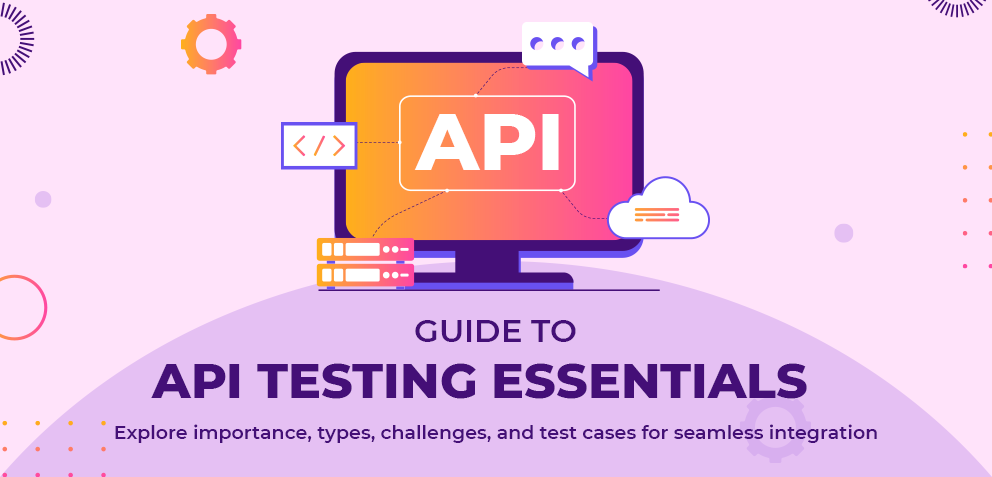In the realm of search engine optimization (SEO), one goal that many content creators strive for is to have their content featured as a snippet at the very top of the search results page. These featured snippets provide users with a concise answer to their query, making them an invaluable source of organic traffic. However, crafting content specifically tailored for featured snippets requires a unique approach and understanding of the algorithms driving these results. In this article, we will explore various techniques and tips for crafting content that is more likely to be featured as a snippet, ultimately helping you improve your website’s visibility and attract more visitors.
Understanding Featured Snippets
- Featured snippets are selected search results that are showcased on top of Google’s organic search results in order to answer a user’s query quickly and succinctly.
- These snippets aim to provide users with the most relevant and concise answers without requiring them to click on a specific search result.
- They are highly coveted by content creators and marketers as they can significantly increase visibility and drive traffic to their websites.
- There are different types of featured snippets, including paragraphs, lists, tables, and videos, each tailored to match specific search queries.
- Google’s algorithm determines which content to feature in snippets based on various factors such as relevance, quality, and formatting.
- Crafting content specifically for featured snippets involves strategic planning and optimization to increase the likelihood of your content being selected.
- It is essential to understand the types of featured snippets and the best practices for optimizing content to improve your chances of being featured.
For more information on crafting content for featured snippets, check out this comprehensive guide: Crafting Content for Featured Snippets: Techniques and Tips
Identifying High-Opportunity Keywords
When crafting content for featured snippets, one of the key aspects to consider is identifying high-opportunity keywords. These are the terms or phrases that are most likely to trigger a featured snippet on a search engine results page. Here are some techniques to help you identify these high-opportunity keywords:
-
Use Keyword Research Tools: Utilize tools like SEMrush, Ahrefs, or Google Keyword Planner to discover high-volume keywords related to your content. Look for keywords with a high search volume and low competition to increase your chances of appearing in a featured snippet.
-
Analyze Competitor Featured Snippets: Study your competitors’ content that is already being shown in featured snippets. Identify the keywords they are targeting and consider incorporating those terms into your own content.
-
Focus on Long-Tail Keywords: Long-tail keywords are more specific phrases that can be great candidates for featured snippets. Tailor your content around these longer, more targeted keywords to increase your chances of getting featured.
-
Zero in on Question-Based Keywords: Queries that start with words like "how," "what," "why," or "best" often trigger featured snippets. By focusing on question-based keywords, you can tailor your content to match the search intent of users looking for quick answers.
-
Monitor Google Search Console: Pay attention to the search queries that are bringing users to your site through the Google Search Console. This can help you identify keywords that are already driving traffic and potentially qualify for featured snippets.
By implementing these techniques and focusing on high-opportunity keywords, you can improve your chances of appearing in featured snippets and driving more organic traffic to your site.
Structuring Content for Snippet Optimization
When structuring your content for snippet optimization, there are several key factors to consider in order to increase the likelihood of your content being featured in a snippet:
-
Clear and Concise: Make sure your content is clear, concise, and directly answers the user’s query. Snippets typically include a brief summary of the information, so your content should be easily digestible.
-
Use Structured Data: Utilize structured data markup like Schema.org to provide search engines with context about your content. This can help search engines understand the content and improve the chances of it being selected for a snippet.
-
Organize Content: Organize your content using headers, bullet points, and numbered lists. This makes it easier for search engines to identify the most relevant information that could be featured in a snippet.
-
Answer Questions Directly: Anticipate user questions and provide clear answers within your content. This can increase the chances of your content being chosen for a featured snippet when a user searches for that particular question.
-
Keyword Optimization: Incorporate relevant keywords that people commonly use in search queries related to your content. This can help search engines understand the relevance of your content and include it in a featured snippet.
By following these strategies and structuring your content effectively, you can improve your chances of having your content featured in snippets and increase visibility and traffic to your website.
Using Clear and Concise Language
When crafting content for featured snippets, it is essential to use clear and concise language to increase the chances of your content being selected by search engines. The following techniques and tips can help you effectively communicate your message in a concise manner:
-
Use simple and easy-to-understand language: Avoid jargon and technical terms that may confuse readers. Opt for straightforward language that is easily digestible.
-
Get straight to the point: Start your content with the most important information at the beginning. Avoid lengthy introductions and get right to the heart of the matter.
-
Use bullet points and numbered lists: Breaking down information into bullet points or numbered lists can help organize content and make it easier for readers to scan and digest key points quickly.
-
Keep sentences and paragraphs short: Long sentences and paragraphs can be overwhelming for readers. Aim to keep your sentences concise and to the point. Break up large blocks of text into smaller paragraphs for better readability.
-
Eliminate unnecessary words: Trim down your content by removing any unnecessary words or phrases that do not add value to the information you are trying to convey.
-
Use headings and subheadings: Use headings and subheadings to break up your content into sections. This helps readers navigate your content easily and find the information they are looking for quickly.
By following these tips and using clear and concise language in your content, you can improve your chances of having your content featured in search engine snippets.
Leveraging Lists, Tables, and Charts
When crafting content for featured snippets, using lists, tables, and charts can greatly increase the likelihood of your content being chosen as the featured snippet. These elements can help organize information in a clear and concise manner, making it easier for search engines to understand and display your content as a featured snippet. Here are some techniques and tips for leveraging lists, tables, and charts effectively:
-
Lists:
- Use numbered or bulleted lists to break down information into easy-to-digest points.
- Include important keywords in list items to optimize for featured snippet visibility.
- Keep lists concise and relevant to the user’s search query.
-
Tables:
- Utilize tables to present data in a structured format that is easily scannable.
- Include relevant headers and labels to provide context for the information within the table.
- Use tables for comparison purposes, such as pricing or specifications.
-
Charts:
- Incorporate charts or graphs to visually represent complex data or trends.
- Ensure that the information in the chart is clear and easy to interpret at a glance.
- Provide a descriptive caption or title for the chart to give context to the data being presented.
By incorporating lists, tables, and charts into your content, you can enhance the readability and visual appeal of your information, making it more likely to be selected as a featured snippet by search engines. These elements can help to provide quick, valuable answers to users’ queries, increasing the visibility and credibility of your content online.
Addressing Common Questions and Concerns
- 1. Does every website have the potential to have a featured snippet?
Not every website has the potential to have a featured snippet. Google looks for content that directly answers a user’s query in a concise manner. However, by following the techniques and tips outlined in this guide, you can increase your chances of appearing in a featured snippet.
- 2. How do I optimize my content for featured snippets?
Optimizing your content for featured snippets involves structuring your content in a way that provides clear and concise answers to common questions. Additionally, using formatting such as lists, tables, and headings can make it easier for Google to feature your content in a snippet.
- 3. How can I track my performance in featured snippets?
You can track your performance in featured snippets by using tools such as Google Search Console and third-party SEO software. These tools can provide insights into which snippets your content is appearing in, as well as opportunities for improvement.
- 4. Is it worth the effort to optimize for featured snippets?
Optimizing for featured snippets can have a significant impact on your website’s visibility and click-through rates. By providing quick answers to common questions, you can attract more organic traffic and establish yourself as an authority in your niche.
Incorporating Relevant Images and Videos
- Including relevant images and videos in your content can significantly increase the chances of your content being selected for a featured snippet.
- Images and videos not only make your content visually appealing but also provide additional context and value to the user, which search engines prioritize when selecting content for featured snippets.
Tips for incorporating images:
- Use high-quality images that are relevant to the topic discussed in your content. Avoid using generic stock photos that do not add value to your message.
- Optimize images for SEO by using descriptive filenames, alt text, and captions that include relevant keywords.
- Include images that illustrate step-by-step processes, data charts, infographics, or comparison tables that can enhance the user’s understanding of the topic.
Tips for incorporating videos:
- Embed videos from reputable sources like YouTube or Vimeo that offer valuable insights or demonstrations related to the content.
- Create your videos if necessary to provide unique and informative content that complements your written text.
- Optimize video titles, descriptions, and tags with relevant keywords to improve visibility in search results.
By incorporating relevant images and videos in your content, you not only enhance the user experience but also increase the chances of your content being selected for a featured snippet, ultimately driving more organic traffic to your website.
Focusing on User Intent and Search Queries
-
Understanding User Intent: One of the key factors in crafting content for featured snippets is understanding the user intent behind a particular search query. By analyzing the search intent, you can tailor your content to directly address the specific needs of the user.
-
Keyword Research: Conduct thorough keyword research to identify the most relevant search queries related to your content. By focusing on high-volume keywords that are likely to trigger featured snippets, you increase your chances of appearing in the coveted position zero.
-
Long-Tail Keywords: Targeting long-tail keywords can be particularly effective when crafting content for featured snippets. Long-tail keywords are more specific and typically have lower competition, making it easier to rank for them in featured snippets.
-
Analyzing SERP Features: Study the search engine results page (SERP) features for your target keyword to understand what type of featured snippet is commonly displayed. This can help you tailor your content to better align with the search engine’s preferences.
-
User-Friendly Content: Ensure your content is structured in a user-friendly format that directly answers the search query. Use clear headings, bullet points, and concise sentences to make it easier for search engines to extract information for featured snippets.
-
Natural Language Processing: Incorporate natural language and conversational tone into your content to align with how users typically phrase their search queries. This can increase the likelihood of your content being selected for a featured snippet based on user intent and search queries.
By focusing on user intent and search queries, you can create content that is more likely to be featured in search engine snippets, increasing your visibility and driving more organic traffic to your website.
Monitoring Performance and Making Adjustments
Once you have implemented your strategies for crafting content for featured snippets, it is crucial to continually monitor the performance of your efforts and make necessary adjustments to ensure optimal results. The following steps can help you effectively track and adjust your content:
-
Monitor featured snippet rankings: Regularly check where your content stands in the featured snippets section of search engine results pages (SERPs). This will give you insights into how well your content is performing and if any adjustments are needed.
-
Analyze click-through rates: Keep a close eye on the click-through rates of your featured snippets. If you notice a decline in clicks, it may indicate that your content needs improvement.
-
Track user engagement metrics: Monitor metrics such as bounce rate, time on page, and scroll depth to gauge how users are interacting with your content. Adjustments may be required if engagement levels are low.
-
Review search queries: Analyze the search queries that are triggering your featured snippets. This can help you identify opportunities to optimize your content further and target specific keywords.
-
Experiment with different formats: Test out variations in content formats, such as lists, tables, paragraphs, and videos, to see which types perform best in featured snippets.
-
Stay updated with algorithm changes: Keep abreast of any updates or changes in search engine algorithms that may affect how featured snippets are displayed. Make adjustments to your content accordingly to stay competitive.
By actively monitoring the performance of your content for featured snippets and making timely adjustments, you can enhance your chances of securing valuable real estate at the top of SERPs.
Staying Up-to-Date with SEO Best Practices
-
Regularly Monitor Changes: Keeping a close eye on industry trends and search engine algorithm updates is crucial to stay ahead in the game. Subscribe to reputable SEO blogs, attend webinars, and follow industry experts on social media to be informed about the latest developments.
-
Utilize Tools: Using SEO tools like Moz, SEMrush, or Ahrefs can help you analyze your website’s performance, conduct keyword research, track backlinks, and identify content gaps. These tools provide valuable insights to help you optimize your content for featured snippets.
-
Stay Informed about Featured Snippets: Understanding how featured snippets work, the different types, and optimal strategies for securing them is essential. Constantly educate yourself on what types of content are more likely to be featured and implement those tactics in your SEO strategy.
-
Test and Learn: Conduct experiments with your content, try different formats, optimize metadata, and monitor the results. A/B testing and analyzing performance metrics can help you understand what works best for your website in the context of featured snippets.
-
Stay Adaptable: SEO is an ever-evolving field, so it’s important to be adaptable and willing to change strategies based on new information. Regularly updating and optimizing your content to align with the latest SEO best practices will keep you competitive in search engine rankings.
For more detailed information on crafting content for featured snippets, you can refer to this guide.
Conclusion
Crafting content for featured snippets requires a strategic approach that incorporates a combination of techniques and tips. Understanding featured snippets, identifying high-opportunity keywords, structuring content for snippet optimization, using clear and concise language, leveraging lists, tables, and charts, addressing common questions and concerns, incorporating relevant images and videos, focusing on user intent and search queries, monitoring performance and making adjustments, and staying up-to-date with SEO best practices are all essential components of a successful featured snippet strategy. By following these guidelines, content creators can increase their chances of earning a coveted spot in Google’s featured snippets, ultimately driving more traffic to their websites and enhancing their overall SEO efforts.
For more tips and techniques on crafting content for featured snippets, visit https://DeltaWriter.com today!

Director @Anyalpha, a Top Software Development Company offering Mobile App Development and Website Development Services to Businesses & Startups.


